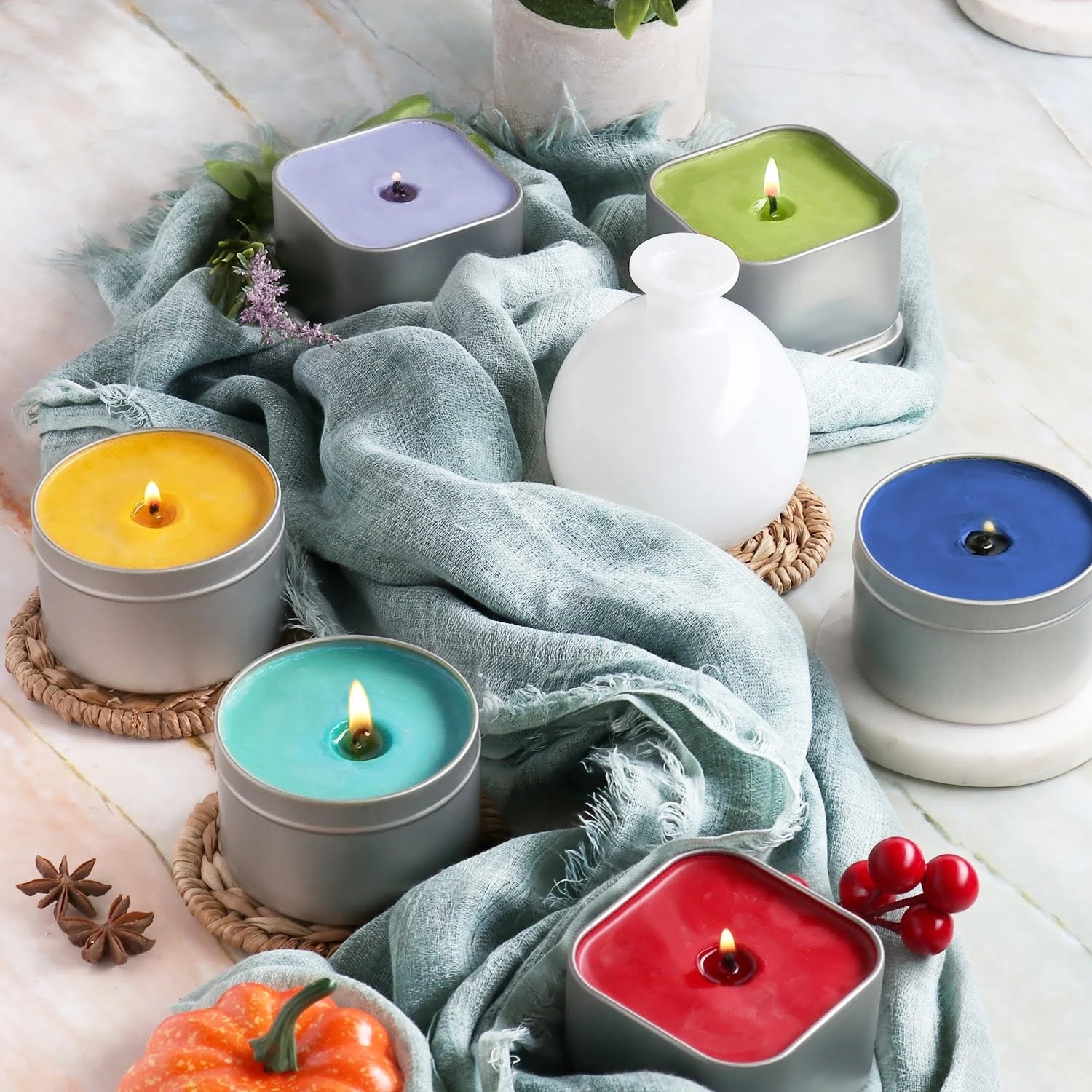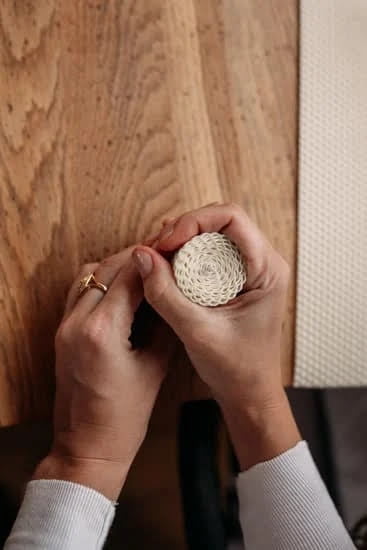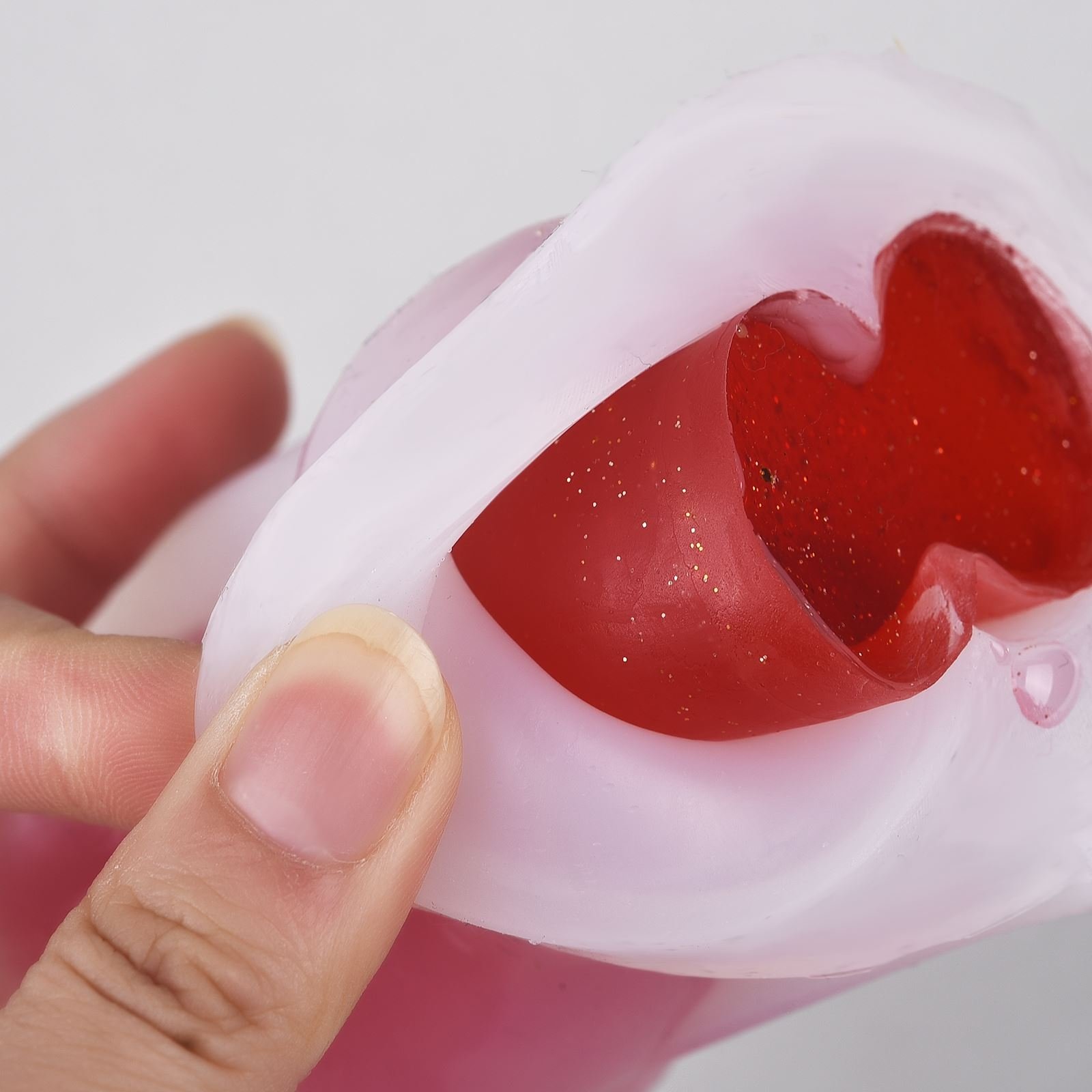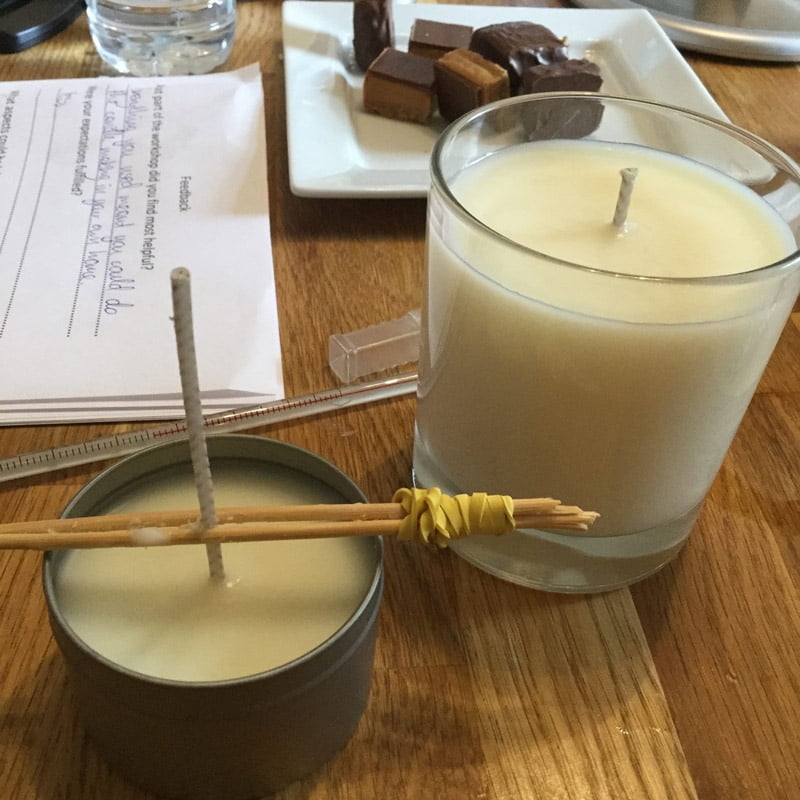Introduction
Candle making is a wonderful way to add ambiance, style, and warmth to your home. With an array of different waxes, wicks, and fragrances available for purchase online or at local craft supply stores, candle making is accessible to everyone. When it comes to scenting candles with fragrance oils though, the options can be overwhelming. To help you create unique scented-candles that fill your home with pleasant aromas, we have put together some tips on combining scents to get the perfect aroma.
When creating unique scented candles there are two main components; the wax structure and the scent added via fragrance oil or essential oils. When you mix scents it’s important to consider the type of wax you’re using and how you plan to use it: will it be in a large container candle so has a chance to ‘warm up’ when lit or will it be in smaller votive or tea light candles where the aroma will be released quickly when lit? Fragrance oils generally last longer than essential oils but you may prefer not to use them if your candle isn’t for extended burning time.
The first step in creating your own custom scent combinations should involve exploring individual fragrances. The typical candle that uses one single fragrance can feel too strong at times unless used sparingly so layering two (or even three) different fragrances tends to give a more balanced result. Start by choosing one major note such as floral, earthy/woodsy, fruity/citrusy, spicy/oriental etc., combined with one balancing note such as fresh/cool (minty or grassy) or smoky/resinous (think incense). You then use those two notes as general guidelines while selecting your actual scents from among thousands that may exist within those categories.
You might also try experimenting with complimentary scent combinations like smells naturally found together in nature (such as lavender and citrus), create harmonies between similar notes like sweet orange & tangerine) or go a bit more daring by including exotic ingredients like sandalwood for a woodsy undertone laced with spice accents of cinnamon & cardamom – remember there are no rules! When adding these layers of aroma in each succeeding step of this process allow each scent time to blend before adding an additional one – this takes trial and error but it often produces the best results! Try mixing small amounts first before committing larger batches so that potential disasters don’t waste ingredients or time spent crafting!
Once you have determined which combination suits your preferences best, add 2% ” 5% of total volume into melt container before pouring in wax – if using paraffin check manufacturer’s guidelines on what level works best as this varies based on particular brand formulation – pour candle carefully without over stirring – spices can act as wicks but use caution about their amounts used for specific successes within certain combinations! After wick has been secured let cool undisturbed until fully set before burning and enjoying your new custom-made special scent!
Benefits of Craft Candle Making
Craft candle making is a rewarding hobby. Not only is it satisfying to create something with your own hands, but there are countless benefits it brings. One of the great things about craft candle making is the creative freedom it provides when choosing scent combinations.
When crafting candles, you can play around with different kinds of fragrances and create something totally unique and to your own liking. Pitcher plants, apple blossoms, lavender, rosemary- the possibilities are endless! Make your projects more personalized by combining two scents in one candle or even using multiple scents in one effort. You could also explore different fragrance families such as citrus fruit and woody notes for truly exotic mixes. As well as blending scents, adding color can add a decorative touch that complements the aroma of your candle concoction! You may choose specific colors to invoke emotions ” calming blues to help relax after a hard day’s work or use vibrant hues for an energizing burst of positivity first thing in the morning. With craft candles, you can make each item special for whoever it’s made for ” friend, family member or yourself – tailor-made to suit their tastes and preferences for a thoughtful gift!
Types of Candles and their Aroma Profiles
Candles come in many different varieties, each with its own unique scent profile. While some candles rely simply on a single fragrance to create their unique smell, you can also mix and match several scents together to craft special aromas for your candles. Here are some of the most popular candle scents, as well as how they can be combined:
• Citrus notes ” Citrus notes are energizing and invigorating aromas that provide an uplifting feeling. These scents work great when mixed with floral or sweet gourmand fragrances such as vanilla or honey.
• Floral scents ” Floral fragrances, like those of roses, jasmine and lilies, create a calming and relaxing atmosphere in any room. These often work best when combined with citrus or herbal notes such as sandalwood or spruce.
• Herbal/Earthy Notes ” Earthy and herbal scents are deeply rooted fragrances that have calming effects on one’s moods. When making your own candles you can combine them with light tones of spice for increased depth; dark wood notes like mahogany also work well in this instance.
• Sweet Gourmand ” Sweet gourmands are sugary scents like chocolate, caramel and cake batter that create a comforting environment for relaxation. To add complexity to these sugary aromas mix them with herbals such as mandarin or sage.
These popular combinations provide endless possibilities when it comes to crafting unique candles especially customized to your preferences!
Tips for Blending Aroma Oils
For those looking to blend aroma oils to create unique and intriguing candle scents, here are a few tips you should keep in mind. First, start small and experiment with recipes that feature only two or three essential oils. This will help you get a feel for how the various components work together and what kind of effect each one has on the overall finished product. Remember, it’s important to remain patient during this process; sometimes it may take a few tries before you land on a combination that creates your desired combination of scent notes.
Second, consider incorporating both top notes and base notes into your recipe. Top notes, like lemon or orange, are usually lighter smells that you can detect as soon as your candle is lit. Base notes, like cedarwood or sandalwood, have a heavier scent that builds as the candle burns and can linger even after the flame has gone out. Adding both types of aromas to your recipe will help ensure an aromatic experience throughout its burn time.
Thirdly, pay attention to the amount of oil you use in each blend. Start by using half the amount suggested in recipes; too much oil can produce an overpowering smell while too little won’t have enough of an impact when burning. You should always make sure to follow manufacturer’s instructions when measuring ingredients to get consistent results with every batch. Finally, always document your recipes so you can refer back if needed!
Combining Essential Oils for Natural Fragrance Enhancement
Creating your own candle scent combinations is a fun and exciting way to express yourself while creating something natural. By combining essential oils, you can achieve a vast array of pleasant smells with therapeutic benefits. To get started, you will need a carrier oil such as avocado or coconut oil along with several different essential oils of your choice. Essential oils are the extracted essence from plants that contain potent antioxidant and anti-inflammatory properties.
Begin by testing out scent combinations in small batches before investing in larger materials for your candles. This allows you to be creative without wasting materials if any combination doesn’t quite work out. When deciding on fragrance scents, remember that not all combination will smell as pleasant together as intended. It’s important to write down each formulation so it can be recreated again if desired in the future.
When combining essential oils, start by choosing an anchor scent like lavender or rosemary which has subtle hints of grassy aroma and woody undertones. Next, add smaller amounts of complementary scents such as rosewood or bergamot that pair nicely with one another and help boost relaxing aromas in the candle. One can even layer other complementary scents such as basil and mint which are refreshing yet have an herbal smell when combined together. If stronger scents are desired, then adding heavier notes such as clove, ginger and cinnamon could enhance the richness of your aromatic candles. Finally, balance out any overly strong scents with lighter ingredients such as vanilla or orange blossom for a perfect calming finish for your unique candle creation!
Incorporating Herbs, Flowers, and Other Natural Ingredients
Candle making is a great way to express creativity, but one of the most important steps is selecting the right scent combinations. Using herbs, flowers, and other natural ingredients can give your candles unique aromas that you won’t be able to find in stores. Parsley, orange peel, lavender, rose petals and chamomile are all great choices for adding interesting fragrances to your candles. Smudging herbs like sage and cedar chips can also be combined with floral scents for an earthy-floral aroma. It’s also possible to add essential oils with these ingredients for extra depth to the final product. Sage blended with oranges or lemongrass mixed with lavender can provide a soothing combination that smells great and helps set the mood in any room. Try infusing natural oil blends such as ylang-ylang, jasmine and sandalwood for an exotic aroma. Once you come up with a combination you like, you can use it time and time again! Once melted together wax and these ingredients form a sophisticated candle that will delight anyone who burns it
Essential Tools for Making Custom Scented Candles
In order to make custom scented candles, there are certain tools needed. First and foremost is a wax melter. This tool melts down the candle wax and allows it to be blended into different combinations for different scent options. Depending on the type of wax being used, the melter may need to be temperature controlled.
Other useful tools for creating custom scented candles are fragrance oils, wicks, and containers for your candles. Fragrance oils come in various sizes and can also sometimes add color to your candle as well. Wicks do not require any measuring or pouring but should correspond with the size of your container when choosing one so that it fits correctly in the bottom of the vessel before pouring in your mixture. Containers should be chosen based on the desired candle you want — tins, jars and votives can all work depending on the image you have designed in your mind! Finally, safety provides an important element when it comes to making candles with essential oils as many of them contain volatile chemicals that must be handled with care and caution. Utilizing gloves and eye protection when dealing with strong fragrances will provide safe handling during this process.
Examples of Popular Candle Scent Combinations
One popular combination is vanilla and almond. This blend creates a warm, comforting scent with subtle hints of sweetness.
A second popular combination is lavender and citrus. This mix is light, refreshing, and slightly energizing! A great pairing for bathrooms or rooms that could use a little zest.
A third combination is sandalwood and patchouli. This pair is earthy, calming and perfect for cozy spaces like bedrooms, libraries, or home offices.
Finally, an often overlooked combination is cinnamon and apple. The result creates an autumn-like smell that can fill any room with the scents of freshly baked apple pie! Perfect for those who love holiday aromas year-round.
For a more exotic experience at home, try mixing jasmine and ylang-ylang together to create an exotic floral aroma. This vibrant mix will instantly lift up your mood for sure!
If you’re looking for something more spa-like to help you relax after a long day, then try blending eucalyptus and pine together in your candles to achieve an invigorating but serene scent.
Conclusion
Crafting your own fragrant candles is incredibly rewarding. Not only does the process of candle making allow you to explore exciting new scents and combinations, it can also be a great way to relax and unwind. The finished product of your candle creation makes a great home decor piece as well as a wonderful personalized gift for family and friends. Whether you’re looking to introduce something new into your home, or would like to surprise someone important with a thoughtful craft project, the versatility of DIY candles makes them an ideal choice. With scented candles, no two projects have to be the same” be creative with scent combinations and have fun exploring all the possibilities!

Welcome to my candle making blog! In this blog, I will be sharing my tips and tricks for making candles. I will also be sharing some of my favorite recipes.





